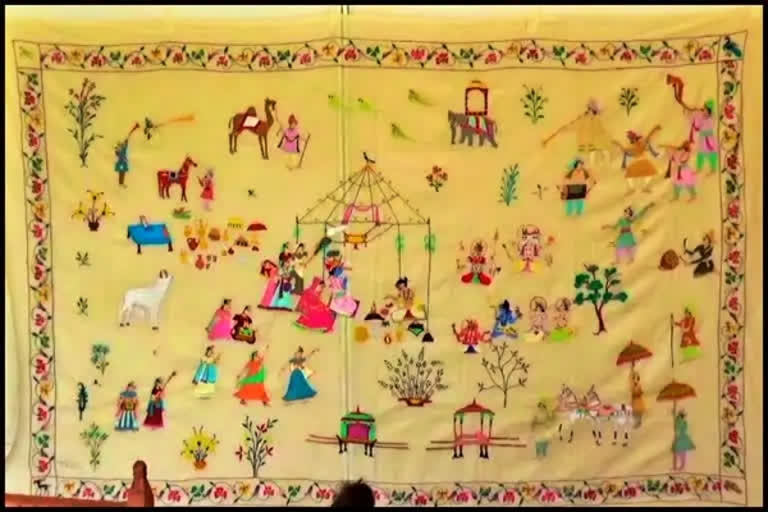Shimla (Himachal Pradesh): Chamba Rumal (handkerchief), typically made in square or rectangular fabrics of varying sizes, gets its name from Chamba, a hill station in Himachal. The government is making efforts to revive this dying art by organising exhibitions and craft fairs to attract people.
A Craft Fair being held at the Ridge in the capital of Himachal Pradesh is drawing visitors not only from Himachal but from other states as well. From Kullu-Kinnauri shawls to Chamba Rumals, these craft fairs give life to the long established art. Chamba Rumal is one of the most liked items in this fair. These handkerchiefs do not impress from a distance as the figures are small and the embroidery is too fine. But all that changes dramatically in a close-up.
The intricate designs amaze and the colors impress while the interplay of figures on the base cloth simply stuns. The price of these kerchiefs from Chamba can go up to lakhs but the ones displayed at the craft fair range from Rs 250 to Rs 50,000.
Artists Indu Sharma and Sunita Thakur say that it takes up to 6 months to make one handkerchief depending upon the size of the fabric and designs. Describing one of her artworks, Indu Sharma said, " historical 'Manimahesh Yatra' of Chamba has been depicted on this handkerchief. Apart from this, Mahabharata, Ramayana, Krishna Leela, and the culture of Himachal are also embroidered on these handkerchiefs."
Also read: Jodhpur handicraft industry has now become a major exporting business
Indu also said, " the embroidery is done with double stitch making it difficult to identify the right side. The specialty of Chamba Rumal is that the same pattern is seen on both sides. The thread used in this is also specially procured from Amritsar. It takes months, not days, to prepare a Chamba Rumal. Artisans who have preserved the historical style have to work hard to make Chamba Rumal."
Chamba Rumal is also kept in London's Victoria Albert Museum, which was gifted to the British in 1883 by Raja Gopal Singh. An embroidered scene of the Kurukshetra war from the epic Mahabharata has been created in this handkerchief.
The oldest form of this handkerchief was made in the 16th century by Bebe Nanaki, the sister of Guru Nanak, and is now preserved in the Gurdwara of Hoshiarpur. Only the members of the royal family and women of the then princely states used to embroider Chamba handkerchiefs to give as wedding gifts or dowry in the 17th century.



